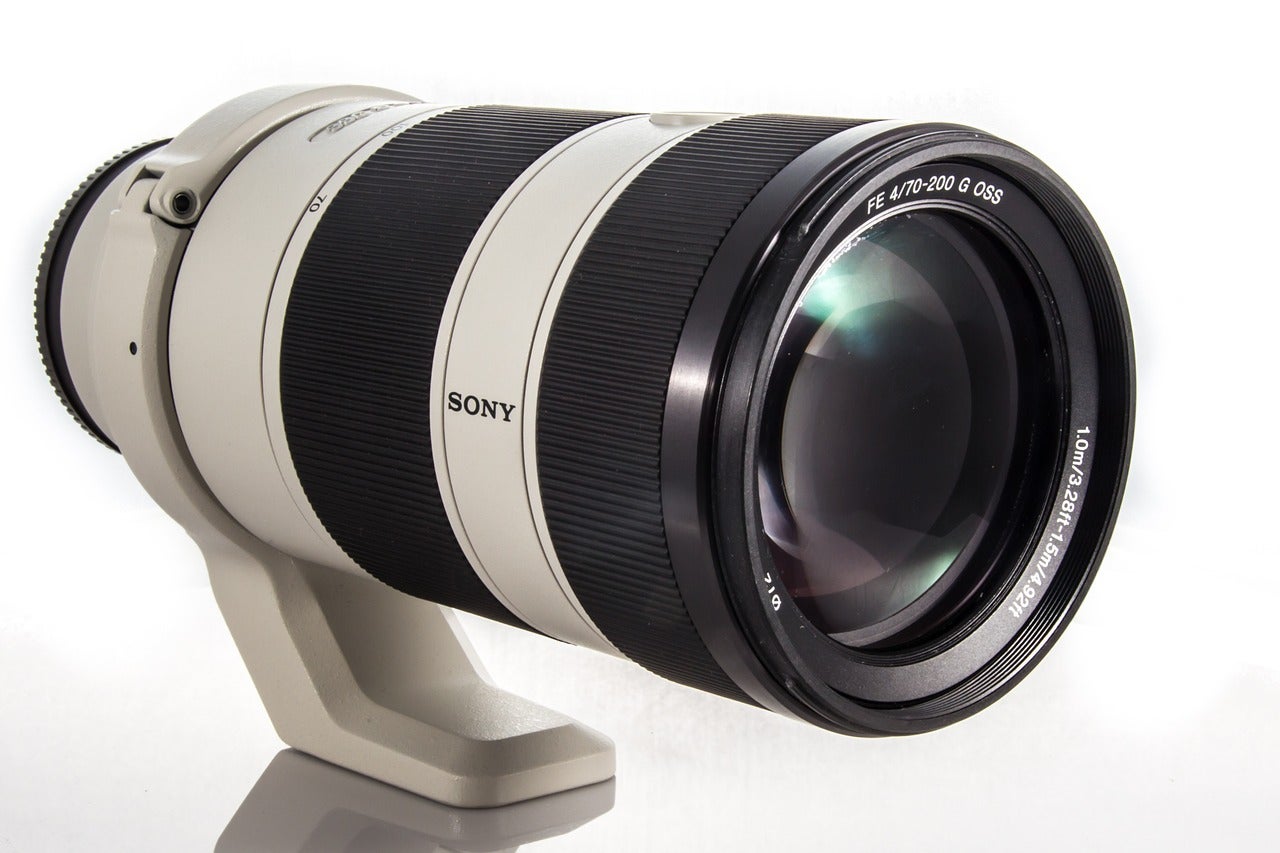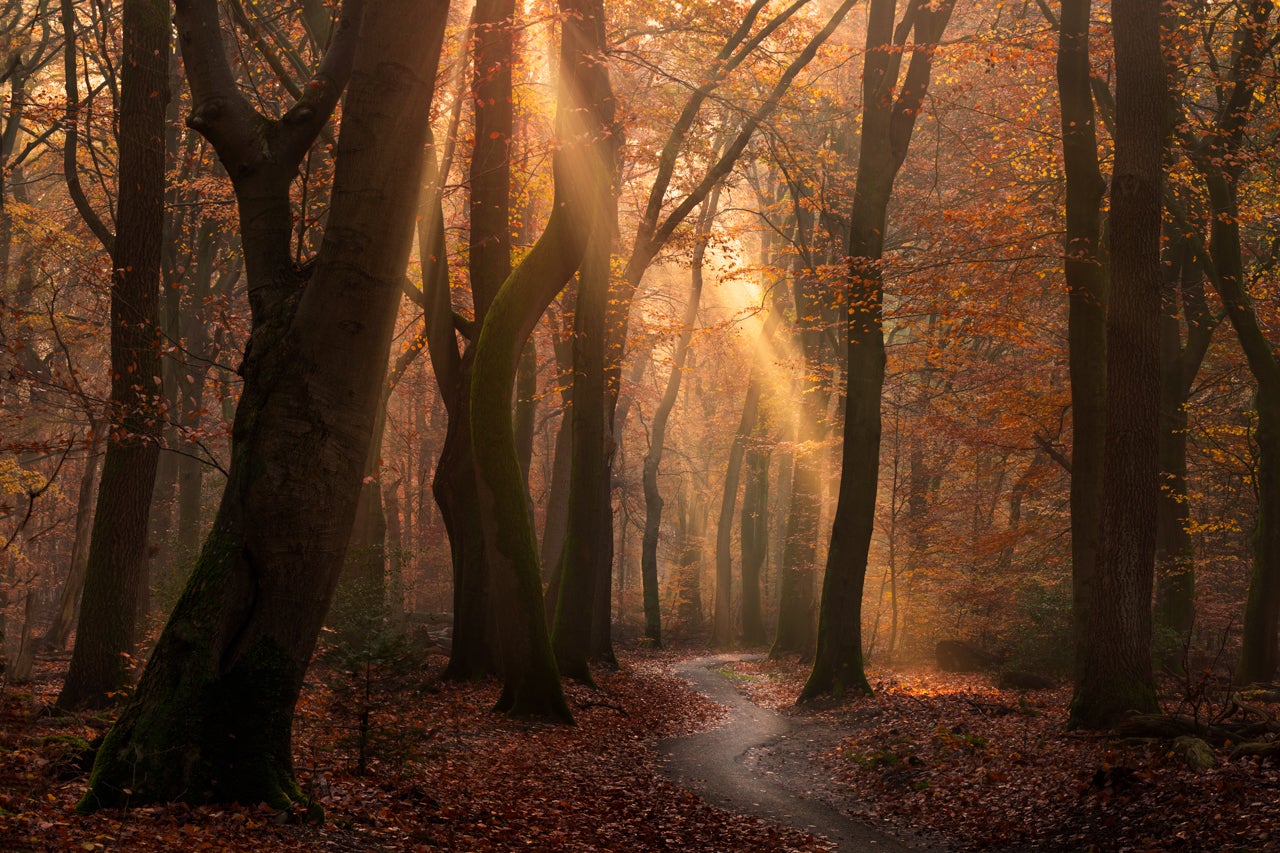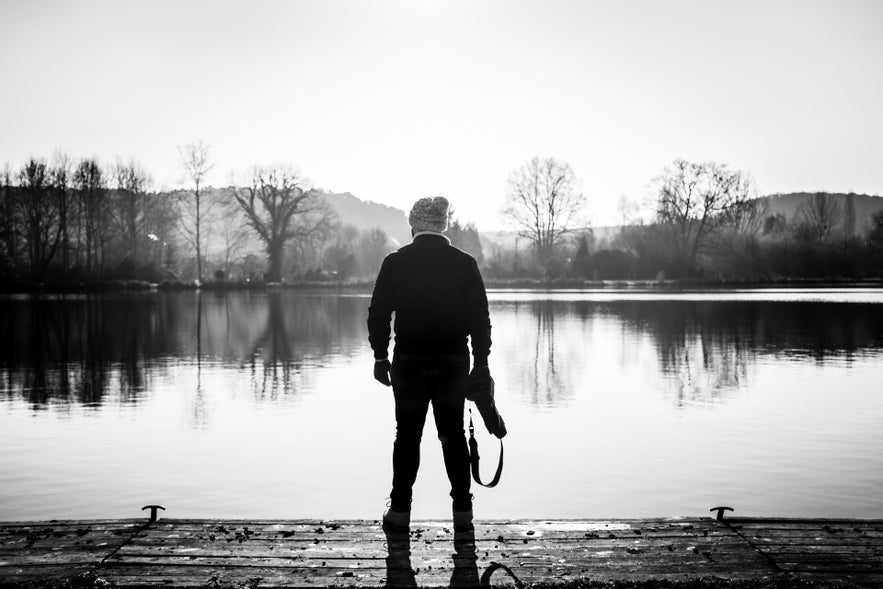
Landscape photography is a genre that takes on many different forms. That’s because it spans all the way from intimate and abstract images to expansive panoramas. To be a successful landscape photographer, you can’t just rely on a blend of the right skills with a good understanding of photographic theory; you’ll need to have the right equipment in your possession.
- Learn more with these Photography Tutorials
- See these 12 Tips for Capturing Amazing City Skylines
While a camera will most likely be your first and most important purchase, the next thing that you should look at are a few lenses to help you realise your creative vision. In this article, we’ll examine some of the best lenses for landscape photography that will make a valuable addition to your collection.
What Makes a Great Landscape Photography Lens?
It’s a good idea to do your research before making any investments, as camera lenses can get quite expensive. These are a few things that you should look for when shopping for a new lens.
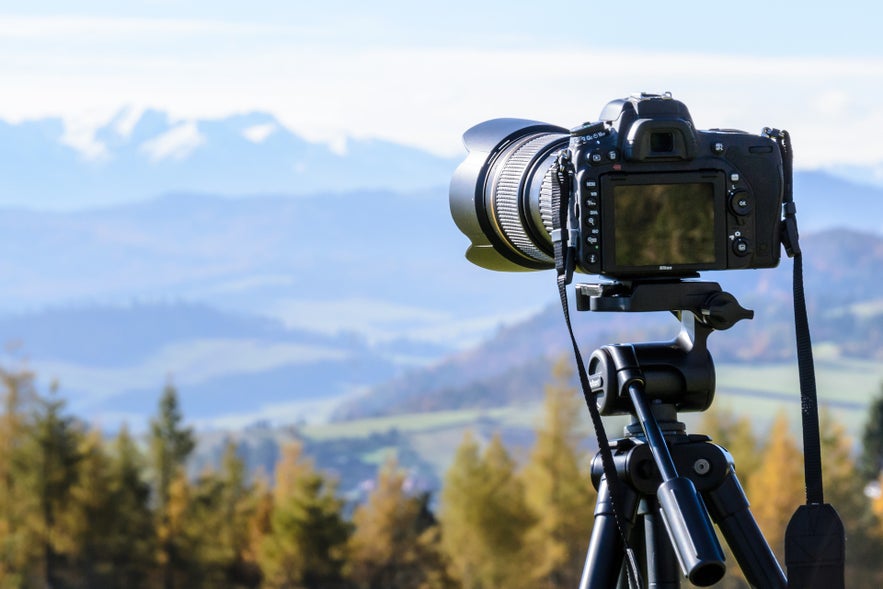 Do your research before investing in a new lens. Photo by: 'Pixabay'.
Do your research before investing in a new lens. Photo by: 'Pixabay'.
Focal Length
There are four main types of lenses that are used commonly in landscape photography. These include wide or ultra-wide angle lenses, standard zoom lenses, telephoto lenses and prime lenses.
Wide Angle / Ultra-Wide Angle Lens
Wide angle and ultra-wide angle lenses are the most popular lenses for landscape photography. Their focal lengths usually range from 14-35mm, though some can be as wide as 10 or 12mm.
The reason that they’re so revered is that they allow you to capture a large range of view and long depth of field, which is basically what most photographers want when they set out to photograph landscapes. These two qualities mean that you’ll end up with images that are consistently sharp in focus from the foreground all the way to the background.
In addition to sharp focus, the barrel distortion of wide angle lenses also makes them quite dynamic for landscapes. This effect allows photographers to get close to subjects in such a way that they can exaggerate and emphasise important elements within a composition.
Standard Zoom Lens
Standard zoom lenses usually range from 24-70mm. The beauty of this is that it provides a similar field of view to the human eye, which is generally accepted amongst photographers to be around the 35-50mm range. As such, you can create images that are more realistic and which will resonate with your viewer.
Standard zoom lenses are great for scenes where you might want to leave out some of the surrounding scenery. Vast amounts of empty space in the landscape around your subject can be quite distracting. By using a standard zoom lens in situations like these, you can improve your compositions by placing the emphasis back upon your subject, simply by zooming in. It can also give you an advantage when you need to get closer to your subject without disturbing the environment, such as in the case of a fence or when surrounded by fragile vegetation.
Telephoto Lens
Telephoto lenses, also known as ‘long lenses’, usually fall within the 70-200mm range. They’re great for situations when you might want to demonstrate a sense of scale, as they allow you to compress the scene.
In landscape photography, you can use telephoto lenses to create more intimate scenes by tightening your compositions and cutting out distractions. Another way to use a telephoto lens is to concentrate on textures and patterns for more abstract imagery.
When photographing landscapes, you may sometimes run into circumstances where you won’t be able to get closer to your subject. This is where the extra length of a telephoto zoom lens can come in handy.
Prime Lens
Prime lenses are those with a fixed focal length – that is, they don’t have any ability to zoom. They are most often used for certain applications, such as photographing landscapes at night or when shooting stars.
Aperture
These days, new cameras often come packaged with a default zoom lens. While kit lenses make it easier for photographers to get started shooting right away, they usually have a variable aperture (e.g. f/4.5-5.6), which is not ideal for landscape photography. What you want to look for is a lens with a fixed aperture (e.g. f/2.8). Although fixed aperture zoom lenses may be expensive, they are more versatile in terms of applications – such as when you transition from daytime to night photography.
 Aperture is an important thing to take note of when looking for a new lens. Photo by: 'Pixabay'.
Aperture is an important thing to take note of when looking for a new lens. Photo by: 'Pixabay'.
A lens with a fast aperture is particularly useful in low light conditions, such as when shooting sunrise and sunset. You’ll also need a lens with a fast aperture to capture the stars, moon, Milky Way or Northern Lights at night. While there is no best aperture for landscape photography, the aperture of your lens should be f/4 or greater.
Many zoom lenses these days have a fixed aperture of f/2.8, which is ideal for shooting in low light. Some prime lenses have even faster fixed apertures of f/1.8, f/1.4 and f/1.2. While the quality of prime lenses is often superior to zoom lenses, they can be heavy, costly and restrictive for landscape photography. However, a lot of landscape photographers have a dedicated prime lens just for shooting at night. If you have the budget and the physical ability to carry one, then a prime lens with a fast aperture in addition to a few zoom lenses will be a good investment.
- See also: How to Get Creative with a Fisheye Lens
Autofocus
Although landscape photography is a much slower genre than sports photography, it still pays to invest in a lens with autofocus abilities. Simply put, there will be times when focusing manually will become bothersome, such as when shooting landscapes handheld.
Switching to manual focus is best for situations when the autofocus may fail, such as when shooting in low light conditions or at night.
Image Stabilisation / Vibration Reduction
Most lenses these days come with in-built image stabilisation technology, which works to reduce camera shake. This can be handy, not just when you are shooting handheld but also in windy conditions. It’s especially useful for shooting in low light and can mean all the difference between a blurry shot or one that is sharp.
Weather Resistance
Capturing landscapes means that you’ll be spending a lot of time outdoors, in all sorts of weather conditions. To ensure that your lens doesn’t malfunction with a little bit of rain or moisture when you’re out in-field, choose one that is weather-sealed and constructed from durable materials.
- See also: Best Lenses for Night Photography
Things to Consider Before Purchasing
Buying a new lens for your camera is not as simple as it seems. Not all lenses will be compatible with your camera. For example, you won’t be able to use a Nikon lens with a Canon camera, unless you have a special lens adapter. Even with a lens adapter, there will be drawbacks to using lenses made by other manufacturers. Features such as autofocus and image stabilisation may cease to work.
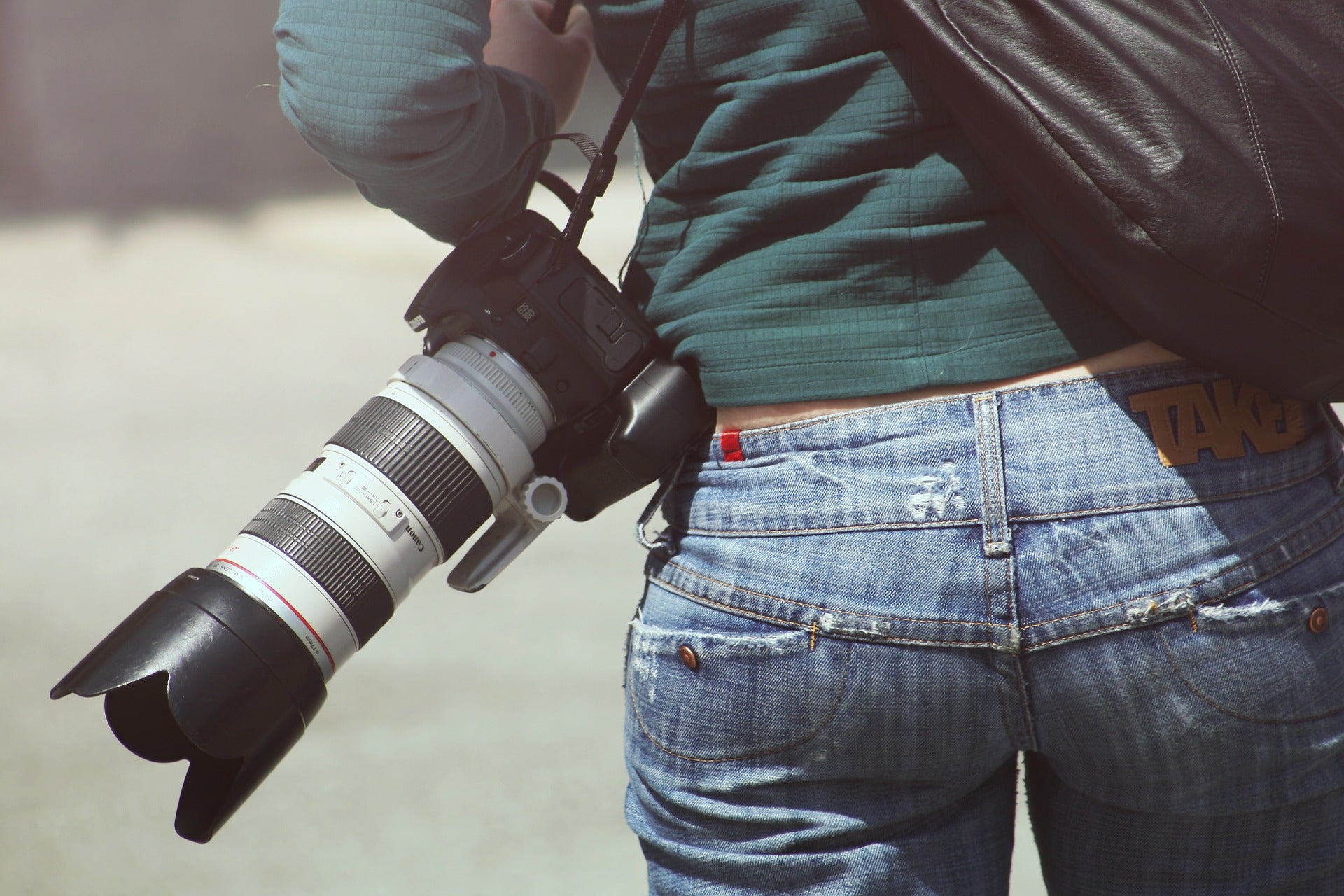 There are many lenses on the market these days, aside from Canon, Nikon and Sony. Photo by: 'Pixabay'.
There are many lenses on the market these days, aside from Canon, Nikon and Sony. Photo by: 'Pixabay'.
Having said that, some third-party lens manufacturers – such as Sigma, Tamron and Tokina – produce lenses with specific mounts that will fit different camera brands. Whether the mount is compatible with your camera is something that you will certainly need to check before you buy a lens.
Aside from that, another thing that you will need to be aware of is whether your camera is a crop sensor (APS-C) or full frame. Camera manufacturers often produce two lines of lenses – one that is designed to be used with the former and one that is for use with the latter.
While most full frame lenses may be used with crop sensor cameras, the same cannot be said of the reverse. Additionally, crop sensor cameras have a narrower angle of view, which reduces the effect of full frame wide-angle lenses. This crop factor will need to be taken into account if you plan on using full frame lenses with your APS-C camera.
Another important thing that you will need to consider when purchasing a new lens is which focal lengths you will need to cover. In landscape photography, it’s best to have a small collection of “go-to” lenses that you can take anywhere with you in your camera bag. If you have a large collection of lenses, then chances are that there will be some that you’ll end up using all the time and others that you’ll never use at all.
The ideal combination of lenses for landscape photography is usually a wide-angle lens, standard zoom lens and a telephoto lens. These will usually cover focal lengths all the way from 16mm to 200mm. However, as we mentioned before, you may also like to invest in a dedicated ultra-wide angle lens with a fast aperture, particularly if you plan on doing a lot of night photography.
- See also: The Best Lenses for Wildlife Photography
Best Wide Angle Lenses for Landscape Photography
Nikon 14-24mm f/2.8G ED
RRP: $1,899.95 USD
The Nikon 14-24mm f/2.8G ED is one of the best lenses on the market for landscape photography. This lens is designed to fit both crop sensor and full frame cameras. It also has a nano crystal coating which reduces ghosting and flare. The autofocus function includes the Nikon Silent Wave Motor, which means that the lens will not make a lot of noise when autofocusing.
Advantages:
-
Fast, fixed aperture for shooting during the day or night.
-
Well-built with dust and moisture resistance.
-
Internal focusing technology enables high-speed autofocus.
-
Quiet operation.
-
Maintains sharpness from the centre of the lens to the corners across focal lengths.
Disadvantages:
-
At 1kg (35.3 oz), it is not very small or light, so can be cumbersome when hiking.
-
Front element protrudes, so it is easy to damage and you will need a special filter holder.
Canon EF 16-35mm f/4L IS USM
RRP: $1,099.00 USD
Although Canon has released the 16-35mm f/2.8L III IS USM, the f/4 still remains one of the manufacturer’s best lenses for landscape photography. The reason for this is quite simple: it’s great value for money. Weighing in at 615g (21.69 oz), this lens is relatively light which means that it’s easy to bring along on adventures. Unlike its successor, it has image stabilisation, which makes it all the more useful for landscape photography.
Advantages:
-
Image stabilisation – great for use in low light, as well as during dusk and dawn when shooting without a tripod.
-
Well constructed; dust and water resistant.
-
Edge to edge sharpness.
-
Quiet and fast autofocus.
Disadvantages:
-
Slower aperture of f/4 means it is not a great choice for night or astrophotography. However, it will still perform well at sunrise or sunset when mounted to a tripod.
Sony FE 16-35mm f/2.8 GM
RRP: $2,199.99 USD
The Sony FE 16-35mm f/2.8 GM lens is suitable for Sony’s range of E-mount cameras. It is known as one of the manufacturer’s sharpest lenses and produces quite a nice sunstar. The fast aperture means that you’ll be able to shoot in low light conditions without any problems. Weighing in at 680g (24 oz), it’s light and a great choice for landscape photography.
Advantages:
-
Smooth bokeh.
-
Dust and moisture resistant.
Disadvantages:
-
Very expensive, though you get what you pay for!
- See also: Camera & Gear Reviews
Sigma 14mm f/1.8 DG HSM Art
RRP: $1,599.00 USD
When this lens was released by Sigma, it took the landscape photography world by storm. That’s because it is an incredibly sharp and fast prime lens that is ideal for astrophotography. When you hold this lens, you’ll realise that it’s well-constructed with dust and splash-proof materials. It’s truly a masterpiece of beauty!
Advantages:
-
Very little coma, so stars are sharp close to the edges of the image.
-
Very fast aperture.
-
Available in mounts to suit different camera systems.
-
In-built autofocus.
Disadvantages:
-
Bulbous front element is easy to damage and doesn’t support filters.
-
Quite heavy at 1.17kg (41.27 oz).
- See also: The Best Camera Bags for 2020
Best Standard Zoom Lenses for Landscape Photography
Nikon 24-70mm f/2.8E ED VR
RRP: $2,399.95 USD
This lens is versatile and rugged. It has great edge to edge sharpness and performs well in low light conditions. With dust and moisture resistance, it’s a perfect lens to take out for landscape photography.
Advantages:
-
Fast aperture.
-
Quiet and speedy autofocus.
-
Superb colour rendition.
-
Vibration reduction.
Disadvantages:
-
Heavy to lug around. Weighs in at 1.07kg (38.4 oz).
-
Quite expensive.
Sony FE 24-70mm f/2.8 GM
RRP: $2,199.99 USD
This G-Master lens by Sony offers great image quality and produces quite a lovely sunstar. It’s also great for shooting at night, is quite sharp in the centre and extremely versatile. This is a good choice for landscape photography.
Advantages:
-
Dust and moisture resistant.
-
Sony Nano AR Coating to eliminate flare and ghosting.
-
Fast and quiet autofocus.
Disadvantages:
-
Weighs in at 885.92g (31.25 oz), making it quite heavy to carry around.
-
Soft edge sharpness.
Canon 24-70mm f/2.8L II USM
RRP: $1,599.00 USD
Although this lens may be considered quite old now, it still remains one of the best lenses for landscape photography on the market today. It is durably constructed with dust sealing, water resistance and special fluorine coatings on both the front and rear lens surfaces, which helps to reduce smudges and fingerprints.
Advantages:
-
Zoom lock lever. Ensures safety when carrying your camera around outdoors.
-
Fast aperture. Performs well in low light.
-
Fast autofocus.
-
Very sharp.
Disadvantages:
-
No image stabilisation.
-
Quite heavy at 805g (28.4 oz).
Best Telephoto Lenses for Landscape Photography
Canon EF 70-300mm f/4-5.6 IS USM
RRP: $649.99. USD
While the Canon 70-200mm f/2.8 IS II USM is much sharper than the 70-300mm, it is also heavier and larger. The 70-300mm lens is more compact, making it superior for landscape photography – not to mention that it’s much more attractive in price!
Advantages:
-
Compact. Fits easily in a camera bag.
-
Lightweight (710g), so good for travelling.
-
Image stabilisation.
-
Great value for price.
Disadvantages:
-
Variable aperture of f/4-5.6. Can’t achieve shallow depth of field.
-
Not as sharp as the Canon 70-200mm f/2.8 IS II USM. Soft corners.
-
Can be slow to autofocus.
Nikon 70-200mm f/2.8G ED VR II
RRP: $2,099.95 USD
This lens performs consistently well in terms of sharpness, colour production and contrast. It is durable and weather resistant, making it a good choice for telephoto landscape photography.
Advantages:
-
Fast aperture. Good for low light conditions.
-
Vibration reduction. Great for handheld shooting.
-
Quiet autofocus.
Disadvantages:
-
Very heavy at 1.54kg (54.3 oz).
-
Quite expensive.
Sony FE 70-200mm f/2.8 GM OSS
RRP: $2,599.99 USD
The Sony 70-200mm f/2.8 is a G Master Series telephoto lens with in-built image stabilisation and great image quality. While it can be difficult to bring along for hikes due in part to its weight, it is very sharp and performs well when capturing landscapes.
Advantages:
-
Fast aperture. Great bokeh.
-
Dust and moisture resistant.
Disadvantages:
-
Expensive.
-
Very heavy at 1.48kg (52.21 oz).
- See also: Best Cameras for Beginners in 2020
Tamron SP 70-200mm f/2.8 Di VC USD
RRP: $1,299.00 USD
The Tamron is a great alternative telephoto lens for landscape photography. It is sharp and performs just as well as lenses produced by the “main” camera manufacturers, so don’t expect it to come with too low of a price tag.
Advantages:
-
Comes in Sony, Canon and Nikon mounts.
-
Vibration compensation reduces camera shake.
-
Quiet and fast autofocus.
Disadvantages:
-
Heavy at 1.47kg (51.9 oz).
Now that you’ve got our picks for the best lenses for landscape photography, it’s time to decide which lens is best for you. Taking into account all of the information that we’ve provided, examine your budget and think about what kinds of landscapes you want to shoot. We’ve focused on lenses that fit the three main camera manufacturers: Canon, Sony and Nikon. Keep in mind though that there are other brands out there, so be sure to do your research prior to making a purchase.
About the author: Serena Dzenis is a landscape photographer based in Iceland. You can find more of her work on her website or by following her on Facebook and Instagram.
What are your favourite lenses for landscape photography? Do you have lenses to cover all focal lengths? Share your thoughts in the comments below!



